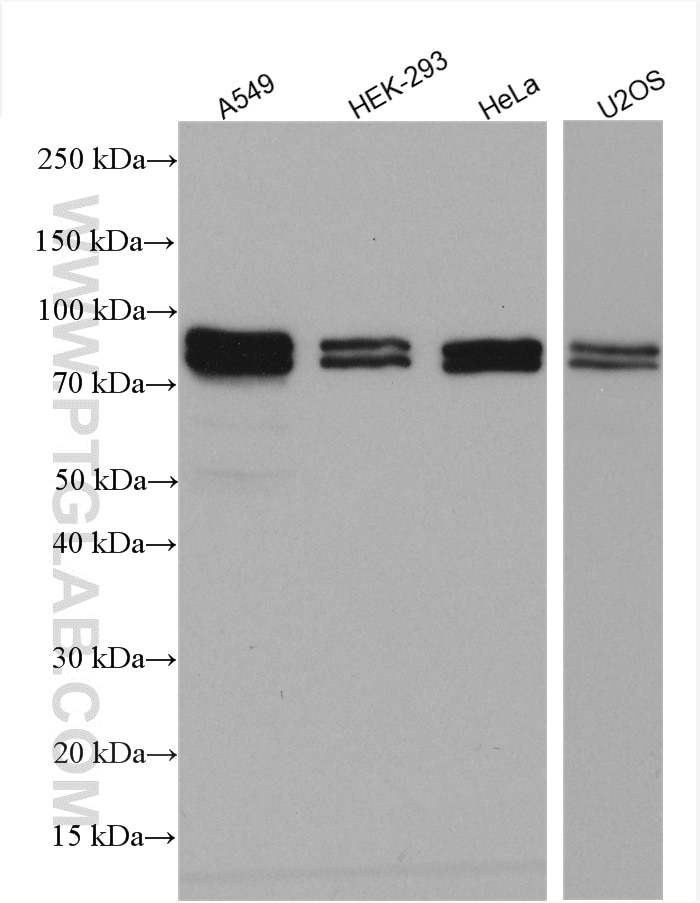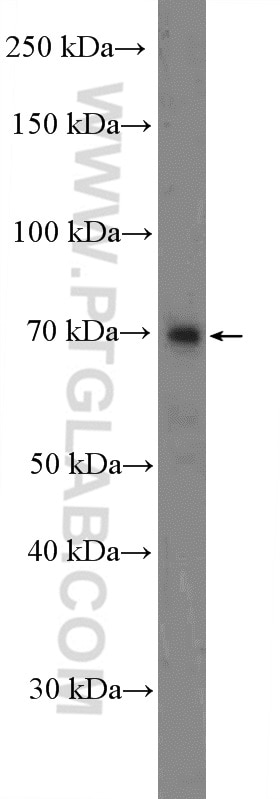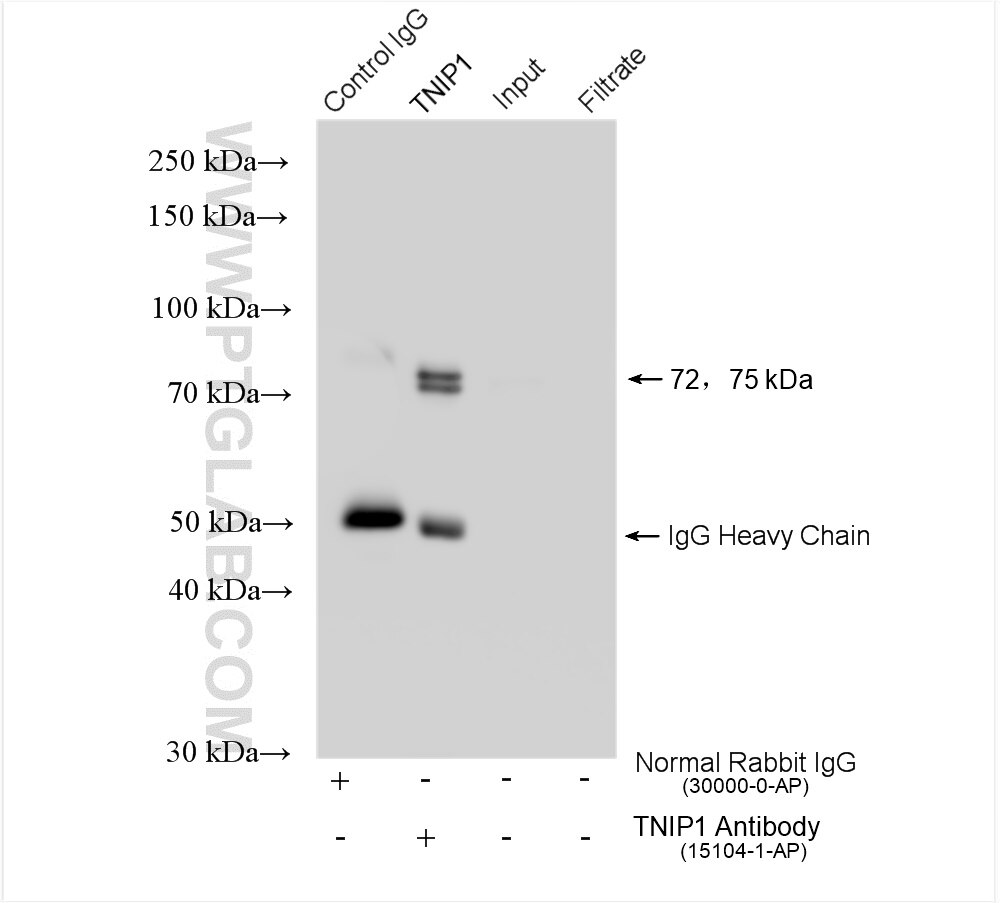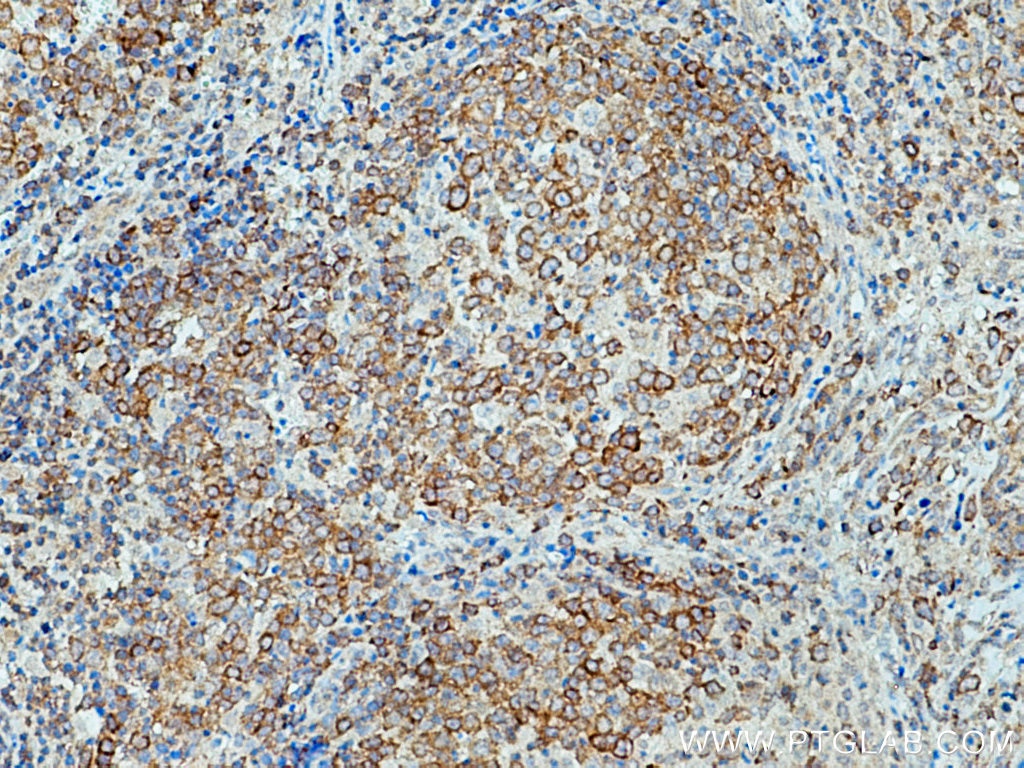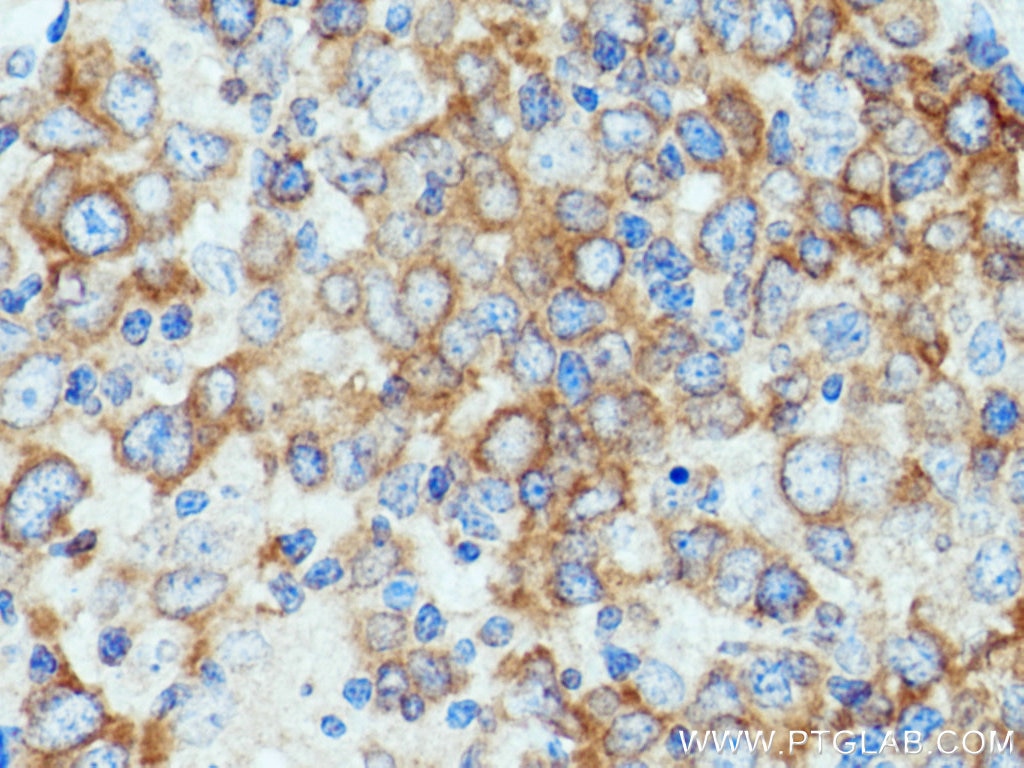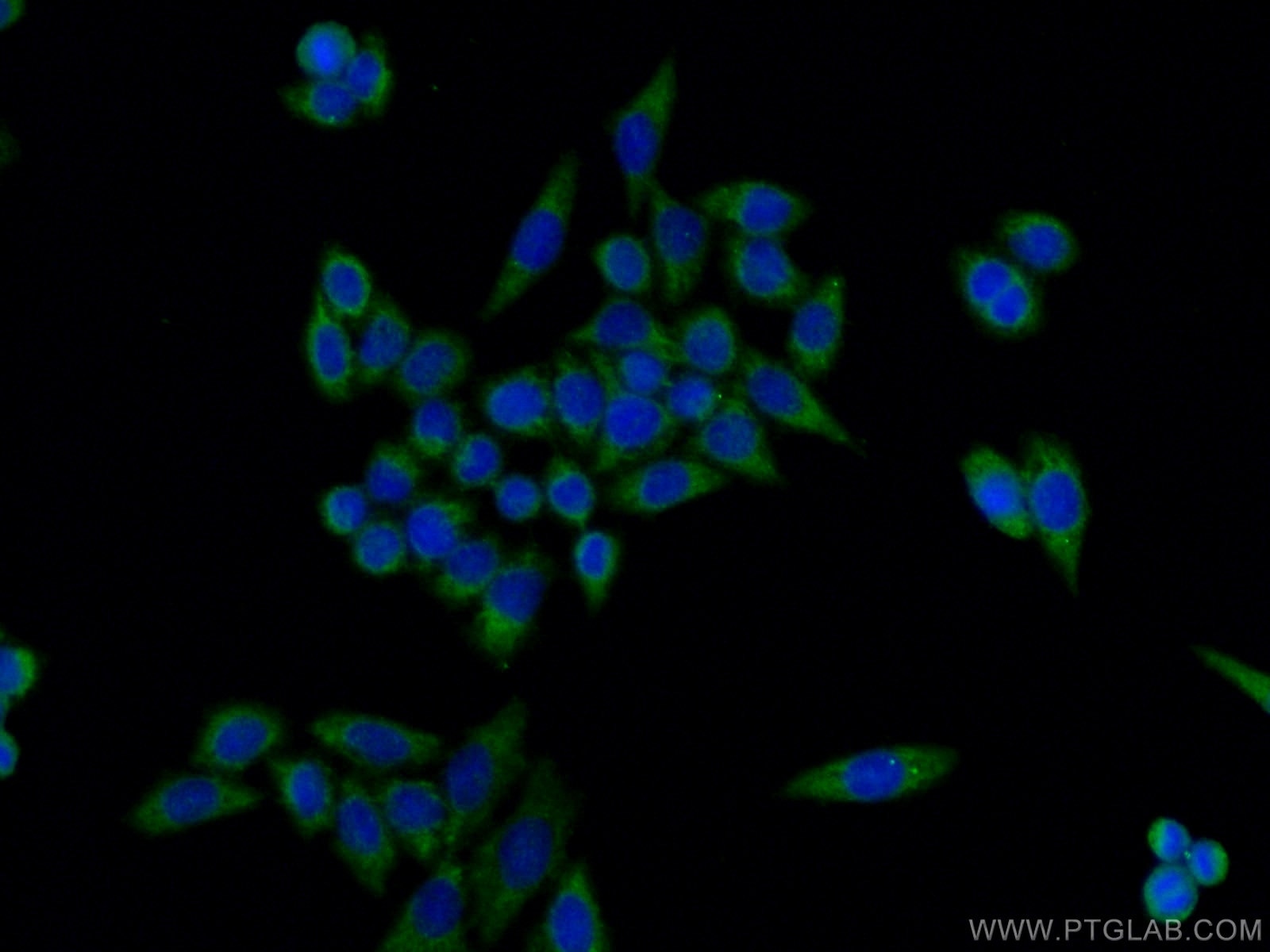- Phare
- Validé par KD/KO
Anticorps Polyclonal de lapin anti-TNIP1
TNIP1 Polyclonal Antibody for WB, IP, IF, IHC, ELISA
Hôte / Isotype
Lapin / IgG
Réactivité testée
Humain, souris
Applications
WB, IHC, IF/ICC, IP, ELISA
Conjugaison
Non conjugué
N° de cat : 15104-1-AP
Synonymes
Galerie de données de validation
Applications testées
| Résultats positifs en WB | cellules A549, cellules HEK-293, cellules HeLa, cellules U2OS, tissu de muscle squelettique de souris |
| Résultats positifs en IP | cellules HeLa, |
| Résultats positifs en IHC | tissu de lymphome humain, il est suggéré de démasquer l'antigène avec un tampon de TE buffer pH 9.0; (*) À défaut, 'le démasquage de l'antigène peut être 'effectué avec un tampon citrate pH 6,0. |
| Résultats positifs en IF/ICC | cellules HeLa, |
Dilution recommandée
| Application | Dilution |
|---|---|
| Western Blot (WB) | WB : 1:1000-1:8000 |
| Immunoprécipitation (IP) | IP : 0.5-4.0 ug for 1.0-3.0 mg of total protein lysate |
| Immunohistochimie (IHC) | IHC : 1:50-1:500 |
| Immunofluorescence (IF)/ICC | IF/ICC : 1:50-1:500 |
| It is recommended that this reagent should be titrated in each testing system to obtain optimal results. | |
| Sample-dependent, check data in validation data gallery | |
Applications publiées
| KD/KO | See 5 publications below |
| WB | See 9 publications below |
| IF | See 3 publications below |
| IP | See 2 publications below |
Informations sur le produit
15104-1-AP cible TNIP1 dans les applications de WB, IHC, IF/ICC, IP, ELISA et montre une réactivité avec des échantillons Humain, souris
| Réactivité | Humain, souris |
| Réactivité citée | Humain, souris |
| Hôte / Isotype | Lapin / IgG |
| Clonalité | Polyclonal |
| Type | Anticorps |
| Immunogène | TNIP1 Protéine recombinante Ag1561 |
| Nom complet | TNFAIP3 interacting protein 1 |
| Masse moléculaire calculée | 72 kDa |
| Poids moléculaire observé | 72 kDa |
| Numéro d’acquisition GenBank | BC014008 |
| Symbole du gène | TNIP1 |
| Identification du gène (NCBI) | 10318 |
| Conjugaison | Non conjugué |
| Forme | Liquide |
| Méthode de purification | Purification par affinité contre l'antigène |
| Tampon de stockage | PBS avec azoture de sodium à 0,02 % et glycérol à 50 % pH 7,3 |
| Conditions de stockage | Stocker à -20°C. Stable pendant un an après l'expédition. L'aliquotage n'est pas nécessaire pour le stockage à -20oC Les 20ul contiennent 0,1% de BSA. |
Informations générales
TNIP1, also named as KIAA0113, NAF1, Nip40-1, VAN and ABIN-1, is involved in inhibition of nuclear factor- B (NF- B) activation by interacting with TNF alpha-induced protein 3, A20 (TNFAIP3). TNIP1 repression of RARs in the presence of RA places it in a small category of corepressors of agonist-bound NRs.
Protocole
| Product Specific Protocols | |
|---|---|
| WB protocol for TNIP1 antibody 15104-1-AP | Download protocol |
| IHC protocol for TNIP1 antibody 15104-1-AP | Download protocol |
| IF protocol for TNIP1 antibody 15104-1-AP | Download protocol |
| IP protocol for TNIP1 antibody 15104-1-AP | Download protocol |
| Standard Protocols | |
|---|---|
| Click here to view our Standard Protocols |
Publications
| Species | Application | Title |
|---|---|---|
Mol Cell TNIP1 inhibits selective autophagy via bipartite interaction with LC3/GABARAP and TAX1BP1 | ||
Cell Death Differ Ubiquitin-binding domain in ABIN1 is critical for regulating cell death and inflammation during development. | ||
BMC Biol A functional genomics screen for microRNA regulators of NF-kappaB signaling.
| ||
Retrovirology Immune regulator ABIN1 suppresses HIV-1 transcription by negatively regulating the ubiquitination of Tat.
| ||
J Cell Biochem ABIN1 inhibits HDAC1 ubiquitination and protects HDAC1 from both proteasome- and lysozyme-dependent degradation.
| ||
Clin Exp Pharmacol Physiol ABIN-1 protects chondrocytes from lipopolysaccharide-induced inflammatory injury through the inactivation of NF-κB signalling. |
Avis
The reviews below have been submitted by verified Proteintech customers who received an incentive forproviding their feedback.
FH Heiko (Verified Customer) (09-04-2019) | PVDF membrane blocked in 5% milk TBST 1 h at RT.Primary antibody incubation overnight 4°C.
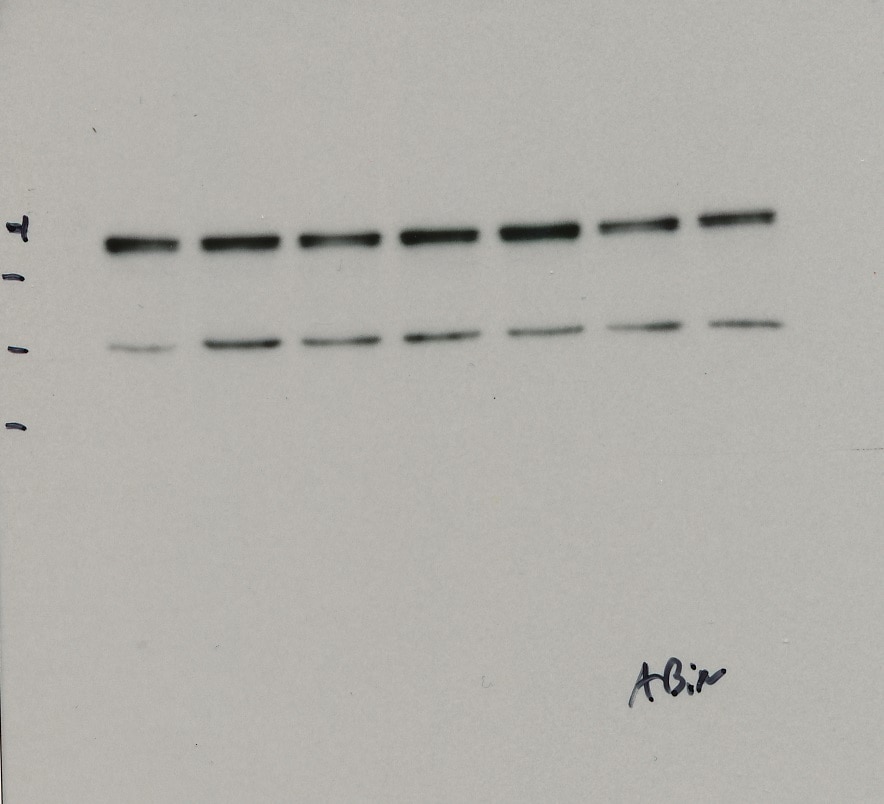 |
